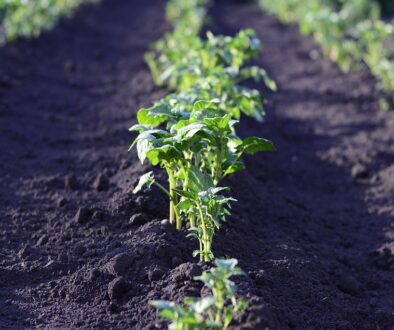Bloom Where You’re Planted: A Guide to Flourishing Flower Gardens
Article by: Suzette Morshead
Gardening has always held a special place in my heart, a sentiment rooted in childhood memories. I recall my grandmother’s garden, a canvas splashed with colors and fragrances that changed with the seasons. She used to tell me, “Bloom where you’re planted.” Little did I know then, her words would shape my perspective on life and gardening in profound ways.
The Philosophy of Blooming
"Bloom where you’re planted" might seem like simple advice, but it carries a depth of meaning, especially in the context of gardening. It encourages us to thrive in our current circumstances, making the best of what we have. This idea promotes resilience and adaptability, lessons that apply not just to gardens but to life itself.
Gardening, much like life, demands perseverance. While we cannot change the soil we’re given, we can certainly enrich it. Whether you’re working with poor soil, confined spaces, or limited resources, you can create a flourishing garden. The following sections will explore how to cultivate your flower garden effectively, using both creativity and determination.
Understanding Your Soil
Every flourishing garden begins with quality soil. Before planting, assess your soil type. Is it sandy, clayey, or loamy? Each type has its own set of characteristics affecting drainage, nutrients, and plant health. Here’s a quick guide to help you:
- Sandy Soil: Drains quickly but lacks nutrients. Add organic matter like compost to improve fertility.
- Clay Soil: Retains water but drains poorly. Loosen with sand and organic matter to enhance drainage and aeration.
- Loamy Soil: A balanced mixture that provides an excellent growing medium for most plants.
Supplies Needed for Soil Preparation:
- Soil test kit
- Compost or organic matter
- Mulch
- Trowel or spade
- Soil amendment materials (perlite, sand, etc.)
Selecting the Right Flowers
Now that your soil is ready, it’s time to choose the right flowers. To thrive, flowers need to be suited to their environment. Consider factors like sunlight, water availability, and climate. Here are some flower categories that thrive in various conditions:
- Full Sun: Marigolds, Zinnias, and Sunflowers are excellent for sunny spots.
- Partial Shade: Astilbe, Bleeding Heart, and Hostas flourish in dappled sunlight.
- Low Water: Succulents, Lavender, and Coneflowers are great options for arid conditions.
Also, think about seasonal blooming. Choose a mix of perennials and annuals to ensure that your garden is alive with color throughout the year.
Supplies Needed for Planting:
- Flower seeds or seedlings
- Trowel
- Watering can or hose
- Garden gloves
- Plant markers
Nurturing Your Garden
Even after you’ve planted your flowers, the journey is far from over. Care and attention are vital to a flourishing garden. Regular watering, appropriate fertilizing, and weed management are critical components.
Watering Tips
- Water early in the morning or late in the afternoon to reduce evaporation.
- Use mulch around your flowers to retain moisture.
- Ensure you’re not over-watering, which can lead to root rot.
Fertilizing
Depending on your soil type, you may need to fertilize. Organic options such as compost or fish emulsion can provide essential nutrients without harming the soil.
Weed Management
Weeds compete for resources, so regular weeding is necessary. Hand-pulling is effective, but mulch can minimize weed growth.
My Personal Story: A Journey of Growth
A few years ago, I decided to transform a neglected patch in my backyard into a flower garden. It had poor soil and little sunlight, much like my struggles in life at the time. Inspired by my grandmother’s wisdom, I blended her lessons with modern gardening techniques.
After conducting a soil test, I learned my soil was a dense clay that couldn’t support the flowers I loved. So, I sought advice from local garden centers and friends, invested time in mixing in compost and sand, and gradually transformed the landscape.
I chose hardy flowers like Black-eyed Susans and Coneflowers that would thrive in partial sun. As the seasons progressed, I witnessed not just the flowers blooming, but my spirit blossoming as well. Each flower that pushed through the ground felt like a small victory over my past hurdles.
The act of nurturing my garden became a metaphor for nurturing my own self. I learned to appreciate the beauty in the struggle, realizing that, much like flowers, we can flourish in adverse conditions if we put in the effort.
Creating a Vision
As you embark on your gardening journey, visualize what you want your garden to look like. Consider:
- Color schemes: Cool colors (blues, purples) create a calming atmosphere, while warm colors (reds, yellows) add vibrancy.
- Heights: Layering plants by height creates depth and visual interest.
- Structures: Add trellises or arches for climbing flowers to enhance your garden’s character.
Supplies for the Garden’s Aesthetic:
- Garden structures (trellises, plant supports)
- Decorative stones or gravel
- Garden decorations (statues, birdhouses)
- Edging materials (bricks, wood)
Conclusion: Flourish and Grow
Remember, "Bloom where you’re planted" serves as a reminder to embrace your current circumstances while working towards your goals. Your flower garden is not just about aesthetics; it reflects your journey of growth and resilience.
As I look at my garden today, I am proud of the colorful blooms that greet me each morning. They remind me that despite the hurdles, with the right care, nurture, and a positive mindset, we can all flourish—just like the flowers in our gardens.
So, whether you have a sprawling backyard or a tiny balcony, take a moment to plant seeds of joy and resilience. Nurture them with love and watch them blossom into something beautiful. Your journey is just beginning, and the flowers are waiting to bloom!
Bloom Where You’re Planted: A Guide to Flourishing Flower Gardens
Article by: Suzette Morshead


